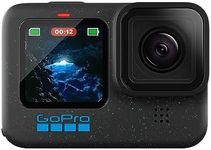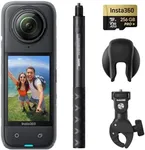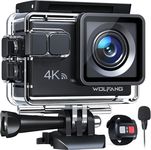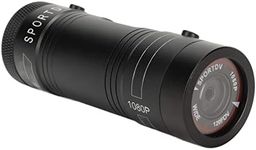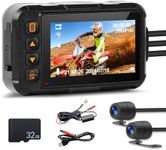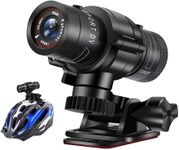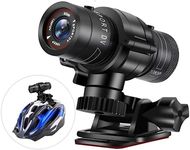Buying Guide for the Best Motorcycle Helmet Cameras
Choosing the right motorcycle helmet camera can greatly enhance your riding experience by capturing your adventures, ensuring safety, and providing evidence in case of incidents. To find the best fit for you, it's important to understand the key specifications and how they align with your needs. Here are the main specs to consider when selecting a motorcycle helmet camera.Video ResolutionVideo resolution refers to the clarity and detail of the footage captured by the camera. Higher resolutions, like 4K, offer sharper and more detailed videos, which are great for capturing scenic rides or important details in case of an incident. Lower resolutions, like 1080p or 720p, are still good for general use and can save storage space. Choose a resolution based on how detailed you want your videos to be and how much storage you have available.
Frame RateFrame rate, measured in frames per second (fps), determines how smooth the video playback will be. Higher frame rates, such as 60fps or 120fps, provide smoother and more fluid motion, which is ideal for fast-paced riding. Lower frame rates, like 30fps, are sufficient for regular riding and can help save battery life. Consider your riding style and how smooth you want your videos to be when choosing the frame rate.
Field of View (FOV)Field of view indicates how much of the scene the camera can capture. A wider FOV, like 170 degrees, captures more of the surroundings, which is great for scenic rides and ensuring you capture everything around you. A narrower FOV, like 120 degrees, focuses more on what’s directly in front of you, which can be useful for specific details. Decide based on whether you want a broader perspective or a more focused view.
Battery LifeBattery life determines how long the camera can operate before needing a recharge. Longer battery life is crucial for extended rides or trips where recharging opportunities are limited. Cameras with shorter battery life may be suitable for shorter rides or if you have the ability to recharge frequently. Consider the duration of your typical rides and how often you can recharge the camera.
Mounting OptionsMounting options refer to how and where you can attach the camera to your helmet. Versatile mounting options allow you to place the camera in different positions, such as on the top, side, or front of the helmet, to get the best angle. Ensure the camera comes with secure and adjustable mounts that fit your helmet style and provide the desired perspective.
Durability and Weather ResistanceDurability and weather resistance are important for ensuring the camera can withstand the conditions you ride in. Look for cameras that are waterproof or weather-resistant to handle rain, dust, and other elements. This is especially important if you ride in varying weather conditions or off-road. Choose a camera that can endure the environments you typically ride in.
Storage CapacityStorage capacity determines how much footage you can store on the camera. Cameras with higher storage capacity or support for larger memory cards allow you to record longer rides without needing to transfer or delete files frequently. Consider how much footage you plan to record and how often you can transfer files to determine the right storage capacity for you.
Connectivity and FeaturesConnectivity options, such as Wi-Fi or Bluetooth, allow you to easily transfer footage to other devices or control the camera remotely. Additional features like GPS, image stabilization, and voice control can enhance your recording experience. Think about how you plan to use the camera and which features will make your experience more convenient and enjoyable.
